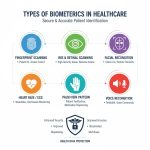Global Virtualized Evolved Packet Core Market
As stated in our extensive report; the Global Virtualized Evolved Packet Core Market accounted for USD 4.1 Billion in the year 2021.
This virtualized evolving packet core market is expanding due to increased LTE customers, continuous 5G infrastructure development, a need to deliver improved customer support, and increased attention to monitoring service quality and performance. Network Functions Virtualization (NFV), which virtualizes functions of an Evolved Packet Core, implements a framework for mobile network voice and data processing and switching called a Virtual Evolved Packet Core (vEPC) (EPC). The vEPC framework has been used for 4G LTE mobile networks and will play a significant role in constructing the next-generation 5G network. By mixing and matching various network components, mobile operators can customize networks to satisfy the specific needs of multiple clients. Furthermore, the virtualized evolving packet core market has many prospects due to the growth in IoT and machine-to-machine communication devices.
Factors Influencing Global Virtualized Evolved Packet Core Market Growth
The growth of the global Virtualized Evolved Packet Core market can be attributable to the following:
- The expansion of this virtualized evolving packet core market is driven by the increasing number of LTE subscribers, the continued construction of 5G infrastructure, the growing need for enhanced customer service, and the increasing emphasis on assessing service quality and performance.
- Network cost savings, more automation, improved network architectural flexibility, and enhanced and quicker delivery services are a few of the main advantages of a Virtual Evolved Packet Core (vEPC) framework. Packet core services are consolidated by vEPC into a virtualized cloud solution.
- Virtualized Evolved Packet Core Market solutions market is propelled by the rapid expansion of devices, users, and applications.
- Telecom operators are looking for more affordable solutions as the demand for additional bandwidth for mobile power networks grows. In the upcoming years, there could be significant growth potential for the vEPC market.
- The consumer demand for video and the movement in business practices toward cloud services have been the main drivers of the rapid increase in the volume of data carried by cellular networks.
- The availability of unlicensed and shared spectrum globally and the commercialization of 5G services in enterprises like private 5G are anticipated to influence how the vEPC industry develops.
On the other hand, the market expansion of Virtualized Evolved Packet Core Market may need to be improved by the rising number of security concerns across network infrastructure and the COVID-19-induced global economic crisis.
Asia Pacific Region to Take Over the Market
Asia Pacific holds the major share and during the forecast period, Asia Pacific is anticipated to develop at the greatest CAGR. The region is changing rapidly regarding the use of new technology across numerous sectors. For implementing the vEPC solution, the infrastructure development in APAC, particularly in Japan, China, India, South Korea, Australia, and Singapore, and the growing deployment of 4G and 5G networks present enormous prospects. The region’s vEPC market will have many opportunities due to the growing use of VR, AR, and IoT technologies. As a result, the content will become even more data-intensive, necessitating seamless network connectivity and coverage.
Conclusion
The overall Virtualized Evolved Packet Core market sales have been positively impacted by factors such as rising demand for commercialization of 5G networks, IoT deployment, and agile networks, rising need to reduce operational expenditure (OPEX) and capital expenditure (CAPEX), and rising demand for broadband services over mobile networks.
The well-known players of the Global Virtualized Evolved Packet Core Market include Cisco Systems Inc. (US), Telefonaktiebolaget LM Ericsson (Sweden), NEC Corporation (Japan), Mavenir (US), ZTE Corporation (China), Red Hat Inc. (US), Nokia Corporation (Finland) and others.
![[Market Research Reports] – Research Google News Blog | VMR.Biz](https://www.vmr.biz/wp-content/uploads/2022/12/logo-removebg-preview.png)











